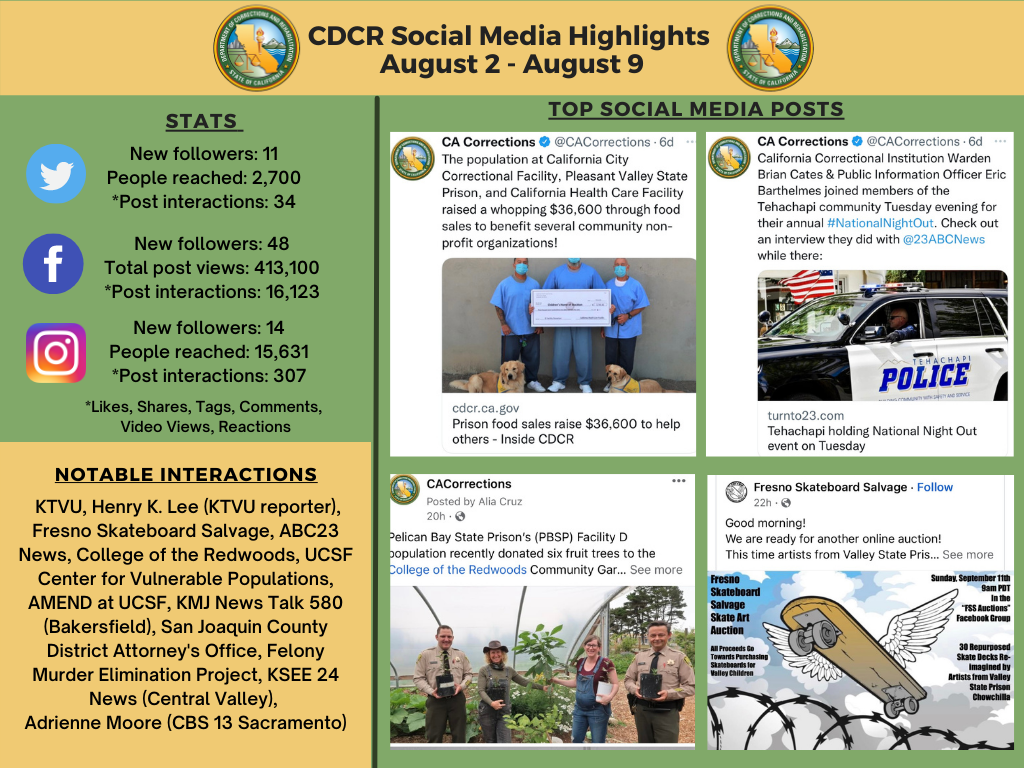What’s New?
‘Unlocked’ podcast hears from OMCP grad

In this week’s episode of “CDCR Unlocked,” John Badgett looks back on his 30-plus years of incarceration and the journey he took to become a certified Alcohol and Other Drug (AOD) Counselor. Badgett credits his family, rehabilitative programs, and his fellow Offender Mentor Certification Program mentors for helping him learn how much good he has to offer in the world.
CDCR Unlocked focuses on topics such as rehabilitation and reentry, peace officer recruitment, employee wellness and criminal justice. It features interviews with and profiles of CDCR executives, administrators, staff, incarcerated people, volunteers and community partners.
In our Institutions
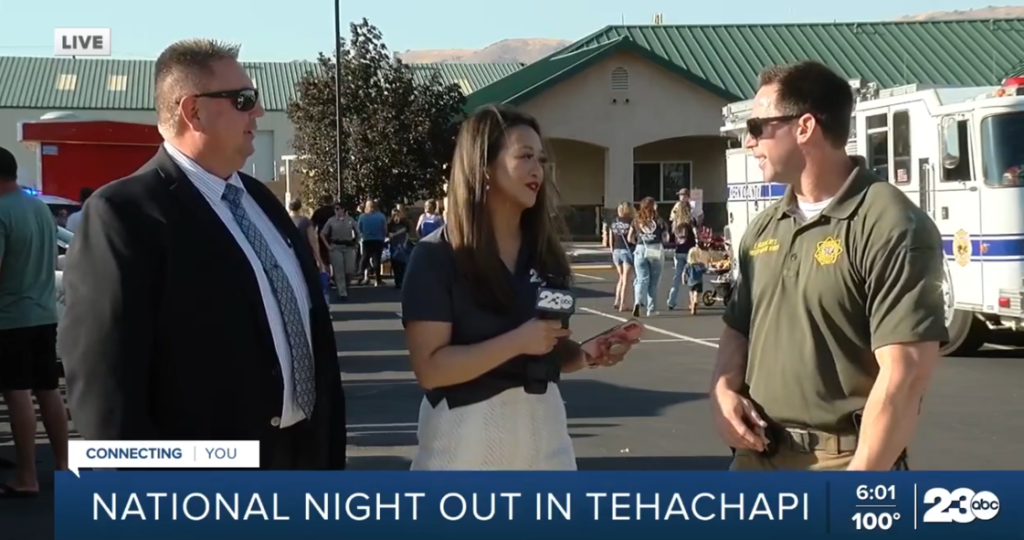
CCI in the spotlight at National Night Out event
California Correctional Institution (CCI) recently joined the California Highway Patrol, Kern County Sheriff’s Office, Kern County Fire Department and Hall’s Ambulance at the National Night Out held in the Golden Hills community of Tehachapi.
Representing CCI were Warden Brian Cates, the Investigative Services Unit (ISU), Crisis Response Team (CRT) and Public Information Officer Lieutenant E. Barthelmes to introduce themselves, greet the community and share a little about what they do as well as their role within the community. The community was excited to meet the staff and ask questions about the “city” within their city. Community members were thrilled to meet the warden and shared they didn’t think somebody like the warden of a prison would attend.
ISU talked to the community about their role within the prison and CRT had some of their gear on display, including letting attendees try on a helmet, hold a ballistic shield and see the hostage negotiations phone. 23 ABC News Bakersfield was in attendance to cover National Night Out and interviewed Cates about why it’s important for CDCR to be in attendance and Barthelmes about job opportunities within CDCR.
In all it was a great night for the community to meet CCI as well as other departments, but more importantly it was great for the department to connect with the community we serve and protect.
Rehabilitation
CCTRP participants give back
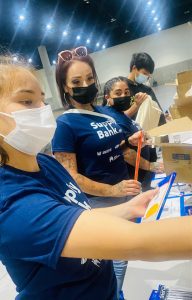
On a recent Saturday, five clients from the Custody to Community Transitional Reentry Program (CCTRP) in San Diego were chosen to help volunteer in a community wide event led by SupplyBank.org.
Clients worked tirelessly from 9 a.m. to noon to help assemble more than10,000 “back-to-school” bags for less fortunate and homeless children throughout San Diego County. All five women stated this was the first time they had participated in an activity where they gave back to their community.
The experience evoked a variety of emotions from the clients who expressed feeling “emotional, humbled, and grateful,” among others. SupplyBank.org is a nonprofit organization that provides “stigma-free” access to essential supplies. Each of the five participants shared that they grew up in an area where poverty was present.
In the Media
Marin photographer documents arts at state prisons
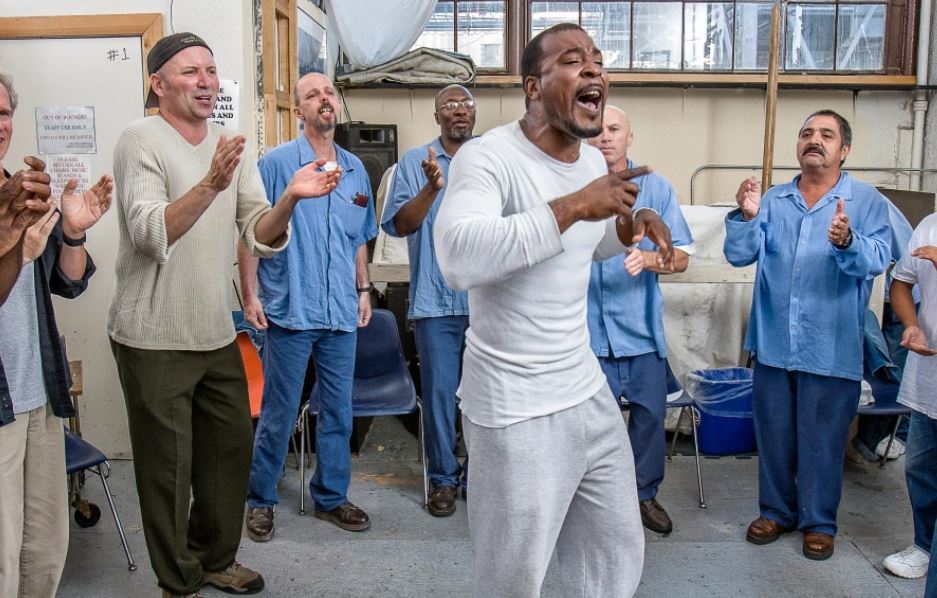
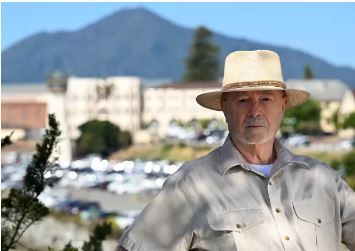
The outdoor concert in 2007 at San Quentin State Prison featuring musician Michael Franti was inspiring for San Rafael photographer Peter Merts as he documented the excitement and joy of the incarcerated attendees.
A volunteer for the show’s producer, the Corte Madera nonprofit Bread & Roses Presents, Merts had no idea that a chance meeting that day would catapult him into a mesmerizing life journey that would take him to all 36 California state prisons over the next 15 years.
Merts also had no way of knowing that during that time, his reputation for capturing the prisoners’ humanity as expressed through art, music and theater would become such that the California Arts Council awarded him an “arts in corrections” grant to sponsor the last 15 months of his odyssey.
Plants gave her hope in prison and a new life after she left

At 25, Genea Richardson lived in a 400-square-foot concrete cell, along with seven other women, four bunk beds, four lockers, a toilet and a shower. She felt like she was suffocating.
But outside, in a small garden at the Central California Women’s Facility in Chowchilla, amid the grass, weeds, soil and trees, she could breathe easy. She felt grounded when she volunteered to water the plants.
“In those moments,” Richardson says, “I had peace.” Her primary job at the prison was cleaning and sanitizing the grounds, but she eventually became known for her plant prowess. “People in the prison would bring plants to me,” she says, “because they knew that I liked them and that I could bring them back to life.”
How this program is making it easier for those leaving prison to earn degrees
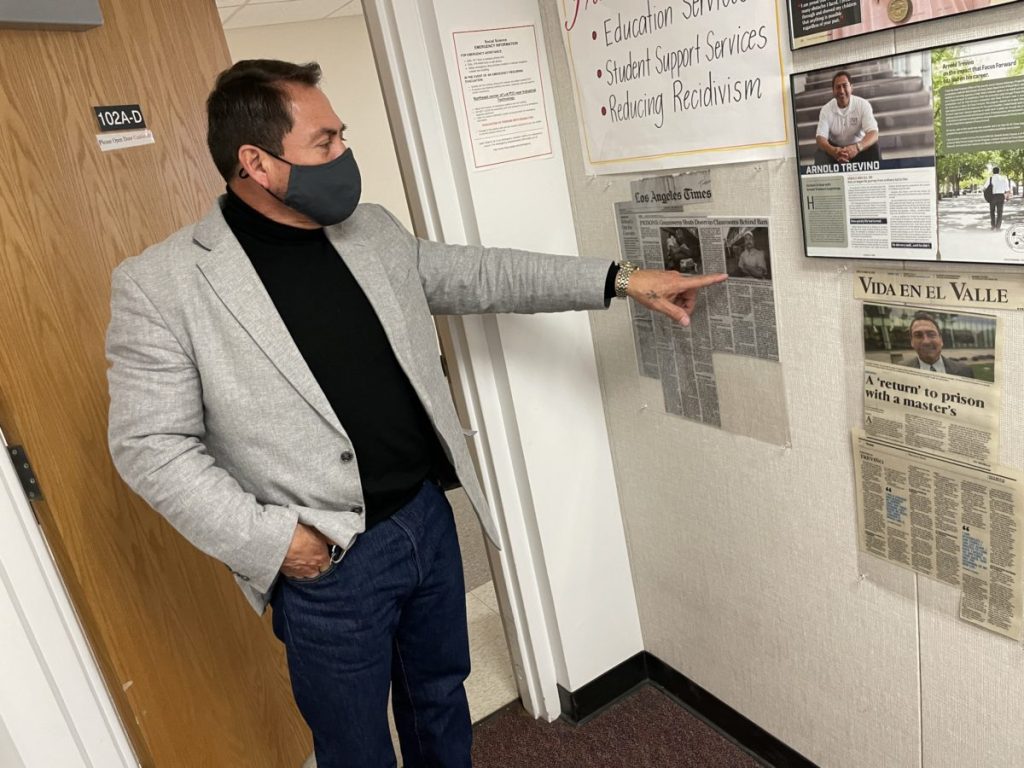
When Arnold Trevino was released from Solano State Prison – one of several California prisons in which he was incarcerated over a 25-year period for second-degree murder – he returned home with an associate’s degree in liberal arts.
It was an achievement he narrowly completed. The college program that allowed him to earn the associate’s degree was cut a year after his graduation, as part of reforms pushed through the federal crime bill of 1994 signed by then-President Bill Clinton, which among other things took away Pell Grants for incarcerated people to pay for college programs. Some of Trevino’s friends, he says, never completed their college work as a result. But he had a chance to taste the feeling of being college educated — and he enjoyed it.
“I got out of prison before I got out of prison,” Trevino told the NewsHour. “After I became educated, I know I never spent another day in prison.”
Ten parolees ready to re-enter society
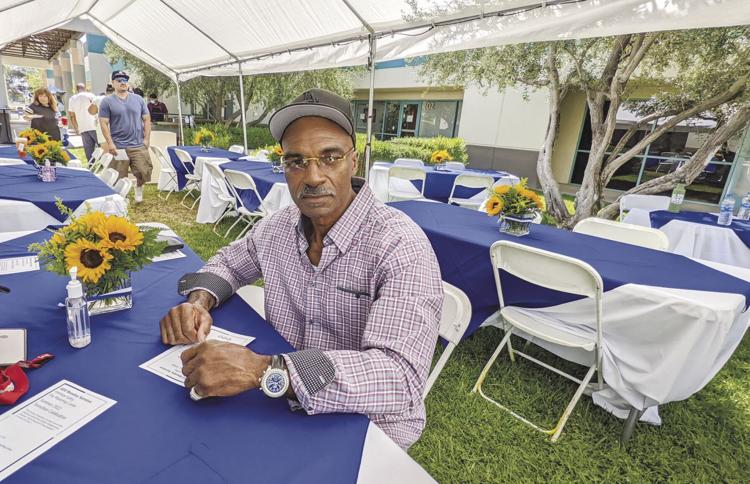
Ten parolees graduated from a re-entry program at the Antelope Valley Day Reporting Center.
Graduates Albert Russell, Adolfo Quiroz, Derrick Bartulio, Horatio Taylor, Isabel Galvez, Marco Gudino, Oyuki Acosta, Ronald Bonilla, Russ Loa and Thomas Defilippi celebrated successful completion of the program with family members and parole officers at a special event hosted, Friday afternoon, by GEO Reentry Services.
Graduates received a certificate and other items at the ceremony.
“This program, it was an adventure,” Russell said. “It was a good adventure for me. It exposed some things that I never thought to really look at.”
Cal Fire crews from across California assist with Willow Creek fires

CAL FIRE began to set up its emergency fire camp in Eureka Tuesday morning to house emergency responders from across California. This is in response to the more than 10,000-acre Six Rivers Lightening Complex Fire that has continued to expand without any containment as of Wednesday.
The camp will provide air-conditioned sleepers, mobile kitchens, work sites and more. Much of the cooking, cleaning and operation of the site is being done by inmates from the California Department of Corrections and Rehabilitation as part of a conservation camp program.
“It’s a program to help [the inmates] move and transition back into being our neighbors and out in the community with us,” said Camp Commander Waylon Hanks.
Inside CDCR Top 5
4,044 Drug traffickers beware: Pelican Bay K-9 teams are on the case
3,804 CDCR Crisis Response Teams seize drugs, cash, guns
3,479 CDCR recruiters join Central Valley hiring effort
2,536 Prison food sales raise $36,600 to help others
1,938 Rehabilitation comes in many forms at CDCR
Social Media
